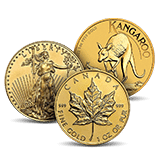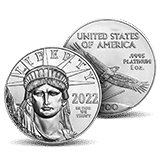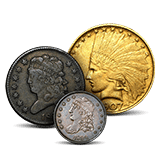
Star notes are issued by the Bureau of Engraving and Printing (BEP) and function as replacement notes printed to substitute for defective bills removed from circulation. Unlike standard Federal Reserve Notes, star notes feature a small star (*) at the end of their serial numbers, marking them as unique. While all star notes are scarce compared to regular notes, the rarest star notes are valuable due to low print runs, high denominations, and historical significance.
Understanding Star Notes
What Are Star Notes?
Star notes are issued by the BEP to replace bills that are misprinted, torn, or otherwise found to be defective during the production process. Instead of discarding flawed notes, the BEP prints replacement bills with the same serial number but with a star added to distinguish them.
Since these notes are only produced when they are needed, their print runs are smaller than standard notes, making them particularly desirable to collectors.
Factors Contributing to Rarity and Value
Several factors affect the rarity and value of a star note.
Print Runs
The smaller the print run, the rarer the note:
- Under 640,000 notes – Considered rare.
- 160,000 or fewer – Highly scarce.
- 16,000 or fewer – Extremely rare.
A star note from a small print run will always be harder to find than one from a multi-million-note batch.
Condition & Grading
- Uncirculated (UNC) or Crisp Uncirculated (CU) notes command the highest premiums.
- Circulated notes with folds, stains, or creases lose significant value.
- Professional grading services (PMG, PCGS) assign grades ranging from Poor (P-1) to Perfect Uncirculated (P-70), significantly influencing market value.
Denomination
- Higher denominations are rarer since fewer were printed for circulation.
- For example, the 1934 $10,000 star note is far scarcer than a $5 or $20 star note.
Historical Context
- The Great Depression & World War II led to smaller print runs and increased note redemption, making star notes from these periods scarcer.
- Example: The 1934 $5 Silver Certificate Star Note is especially rare due to limited printing during the Depression.
Serial Numbers
Certain serial numbers increase value beyond rarity:
- Low Serial Numbers: “00000001*”
- Repeating Digits: “77777777*”
- Ladders & Radars: “12345678*” or “87654321*”
A rare star note with a fancy serial number can command exceptional premiums.
Popularity and Demand
- High-denomination and historical star notes remain perennially in demand.
- Newly discovered star note varieties (such as the 2013 $20 Star Note) see a temporary price surge after discovery, due to collector hype.
- Meanwhile, more widely available star notes, like the 1995 star note, can be found for lower prices.
The Rarest Star Notes
1934 $5 Silver Certificate Star Note
Why it’s rare: Limited print run during the Great Depression; many were redeemed and destroyed, the blue seal and serial numbers add to the collector appeal.
Design Features:
- Blue seal & serial numbers.
- Portrait of Abraham Lincoln.
Estimated Value: High-grade specimens can sell for hundreds to thousands of dollars.
1928 $1,000 Federal Reserve Note Star Note
Why it’s rare: Used mainly for interbank transactions, not public circulation. The population of these is very small today.
Design Features:
- Green seal & serial numbers.
- Portrait of Grover Cleveland
Estimated Value: Often sells for tens of thousands, with six-figure sales possible for pristine notes.
1934 $10,000 Federal Reserve Note Star Note
Why it’s rare: Among the highest-denomination U.S. notes ever issued, only a few known to exist.
Design Features:
- Green seal & serial numbers.
- Portrait of Salmon P. Chase.
Estimated Value: Six figures, with past auction sales exceeding $500,000.
1950 $100 Federal Reserve Note Star Note
Why it’s rare: Scarcity due to low print runs and high attrition.
Design Features:
- Green seal & serial numbers.
- Portrait of Benjamin Franklin.
Estimated Value: Can sell for several thousand dollars in top condition.
2013 $20 Federal Reserve Note Star Note
Why it’s rare: Printing error led to a very limited replacement note run, with many removed from circulation.
Design Features:
- Green seal & serial numbers.
- Portrait of Andrew Jackson.
Estimated Value: Several hundred dollars for uncirculated examples.
By understanding print runs, condition, serial numbers, and market trends, collectors can make informed purchases and enjoy the thrill of numismatic discovery. Star notes blend rarity, historical significance, and investment potential.




